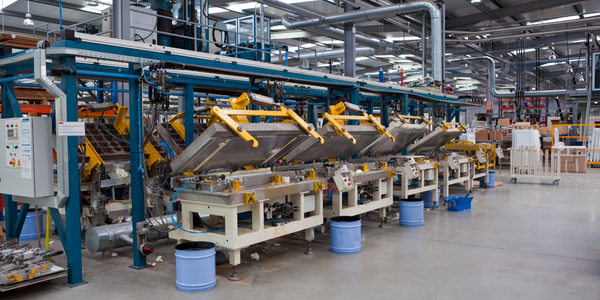Use Cases
- Personnel Tracking & Monitoring
- Time Sensitive Networking
Services
- Training
About The Customer
Rearden's Bar, first opened in 1835, is a famous landmark in Cork, Ireland. Located on the bustling Washington Street, it is renowned as Cork’s largest bar venue for live music and entertainment, attracting live acts from all over Ireland. The bar also welcomes sports enthusiasts to watch live matches on a mega screen. With a workforce of over 400 employees across nine locations, Rearden's Bar is a hub of activity with a variety of venues for customers to enjoy, whether it's chilling out with a cocktail or dancing. The bar's walls are adorned with historical GAA and Rugby match programs and tickets, symbolizing its deep-rooted passion for sport and Ireland.
The Challenge
Rearden's Bar, a popular entertainment venue in Cork City, Ireland, faced several operational challenges despite its success. With over 400 employees across nine locations, the management found scheduling to be a laborious task. The use of Excel for creating schedules was inefficient and time-consuming, especially with shared staff across different locations. Additionally, when staff booked time off, finding suitable replacements with the necessary experience was a significant challenge. The management also wanted to monitor staff time more accurately for better accountability and compliance. They needed a centralized system for storing all necessary documents for easy access when required. Furthermore, the manual entry of data for payroll often led to errors, causing recurring problems and dissatisfaction among employees due to incorrect pay.
The Solution
Rearden's Bar implemented Bizimply, a workforce management software, to address their operational challenges. The software drastically improved scheduling, allowing the management to create popular shift times and separate out different bar locations for better visibility of staff assignments. The software also enabled more accurate monitoring of time and attendance, leading to consistently accurate payroll. Real-time visibility over costs helped the business schedule staff time more efficiently, achieving a balance between the number of employees and customer demand. The HR team could store all employee documents safely and securely in their Bizimply account, ensuring compliance and easy access when needed. The software also facilitated onboarding checklists and reminders for staff training, saving the team considerable time.
Operational Impact
Quantitative Benefit

Case Study missing?
Start adding your own!
Register with your work email and create a new case study profile for your business.
Related Case Studies.

Case Study
Goldcorp: Internet of Things Enables the Mine of the Future
Goldcorp is committed to responsible mining practices and maintaining maximum safety for its workers. At the same time, the firm is constantly exploring ways to improve the efficiency of its operations, extend the life of its assets, and control costs. Goldcorp needed technology that can maximize production efficiency by tracking all mining operations, keep employees safe with remote operations and monitoring of hazardous work areas and control production costs through better asset and site management.

Case Study
Cisco Kinetic for Oil and Gas: Refineries and Plants
The plant manager and safety teams needed a solution that provided near real-time visibility of gas detection and personnel location, with easy to understand visualization and alerting dashboards. This would enable them to improve productivity through decreasing the time taken to start work, optimize evacuation route planning, and to meet critical staff safety and compliance goals.

Case Study
Industry 4.0 at ALPLA: Enhancing Factory Efficiency with IoT
ALPLA, a global leader in packaging solutions, faced several challenges as the complexity of their production machinery increased. The need for highly trained specialists in each factory led to higher personnel costs, difficulties in recruiting experienced talent at each location, and costly personnel turnover. Furthermore, less experienced operators running the machines sub-optimally impacted resource consumption and overall equipment effectiveness (OEE). ALPLA also faced the challenge of monitoring visual inspection systems in every line of their plants, which was almost impossible to do manually. In 2016, ALPLA decided to use data from the 900 different types of embedded sensors in each factory to address these issues. However, their initial choice of SQL Server as the data store for the sensor data proved inadequate, as it was unable to cope with their data requirements.

Case Study
Digital Transformation of Atlanta Grout & Tile: An IoT Case Study
Atlanta Grout & Tile, a Tile, Stone & Grout restoration company based in Woodstock, Georgia, was facing challenges with its traditional business model. Despite steady growth over the years, the company was falling behind the web revolution and missing out on the opportunity to tap into a new consumer base. They were using independent software from different vendors for each of their department information and workforce management. This resulted in a lot of manual work on excel and the need to export/import data between different systems. This not only increased overhead costs but also slowed down their response to clients. The company also had to prepare numerous reports manually and lacked access to customer trends for effective business decision-making.

Case Study
Centralizing Data for Improved Efficiency: A Case Study on Malvern Panalytical
Malvern Panalytical, a UK-based hi-tech electronics company, was grappling with the challenge of decentralized data storage. The company had a vast amount of unstructured data scattered across various platforms, from hard drives to emails and floppy disks. This made the data searching process extremely cumbersome and inefficient. The company's rapid growth, from 200 to over 1,000 employees in a decade, and expansion across three continents further exacerbated the need for a more structured and centralized data system. As a company involved in electronics manufacturing and software development, it was crucial for Malvern Panalytical to find a platform that could structure all their data, track all modifications of documents in real time, and provide clear visibility of the internal information flow across all its facilities.








